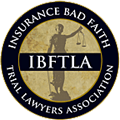Do You Have Legal Options if Your Child Has Been Hurt by a Dangerous Toy?
Toys are meant to bring joy to your child. But when something so seemingly innocent has caused your child harm feels like a betrayal of trust. As much as we try to protect our children, sometimes the toys we buy them may be unsafe due to design flaws, manufacturing errors, or inadequate safety warnings.
If your child has been hurt by a dangerous toy, you may have legal options to seek justice and compensation for the medical expenses, lost wages, and emotional distress your family suffered.
Although seeking a product liability claim will not erase the damage done, a product liability lawyer can hold manufacturers, retailers, suppliers, or other relevant parties responsible for defective or dangerous toys and help protect other children from these harmful products.
What Are Your Legal Options if Your Child Was Injured by a Dangerous Toy?
When a toy injures your child, you may have the following legal options:
Product Liability Claim
Product liability claims are based on one or more of the following:
- Design Defects: The toy’s design is inherently unsafe.
- Manufacturing Defects: The injury was caused by a flaw in the manufacturing process, making the toy dangerous even if the design is safe.
- Failure to Warn: The product lacked adequate safety warnings or instructions, leading to misuse and injury.
Strict Liability
Typically, for an opposing party to be held responsible for your injuries, they must have acted negligently, with significant carelessness, recklessly, or with the intention to inflict harm. However, there are exceptional cases where an individual may be held strictly liable for damages, regardless of fault or wrongdoing.
According to California law, if a product poses greater risks than expected or lacks proper safety instructions, the entities involved in its design, manufacturing, or distribution can be held strictly liable for any injuries that occur from its normal and anticipated use.
Reasonably Foreseeable Danger
The law expects manufacturers to predict how the typical consumer might use or even misuse their products. If a consumer’s use or misuse of a product is predictable and leads to injury, the responsible parties can be held strictly liable.
This doesn’t imply that manufacturers or designers are required to eliminate all potential dangers. Many products that are beneficial in daily life can become hazardous if not used properly.
Manufacturers of such products are obligated to take reasonable steps to reduce the risks associated with their use. This could mean designing the product more safely, improving the manufacturing process, conducting thorough inspections, or providing clear warnings about the product’s potential hazards.
Ultimately, whether the precautions taken were adequate and whether the consumer’s use of the product was foreseeable is something a jury might have to decide.
By understanding these legal options and taking the appropriate steps, you can hold the responsible parties accountable for your child’s injuries. Legal action not only seeks to compensate for the injuries and suffering but also serves as an essential means for enforcing safety standards and protecting other children from similar dangers.
Types of Evidence Required to Prove Liability in a Product Liability Claim
When building a product liability lawsuit, it is wise to collect and document everything related to the incident, including its location, timing, and the manner in which the injury was sustained.
- Comprehensive Notes: Keep precise records of when and where the incident occurred, the sequence of events leading up to and after the accident, your child’s description of what happened, and the setting of the mishap, among other pertinent details.
- Visual Evidence: Capture the accident scene through photos and videos without altering the original state of the environment. Document the toy in question, the injuries sustained, and any other relevant elements that could support your case.
- Eyewitness Statements: If others witnessed the accident, their observations can significantly strengthen your claim. Ensure you gather their detailed accounts of the incident.
- Documents: Keep every piece of relevant paperwork, including the receipt for the toy’s purchase, medical invoices, records of any school absences due to the injury, and so on.
If you believe a faulty or unsafe toy is responsible for your child’s harm, you must inform the Consumer Product Safety Commission (CPSC). This action can not only help safeguard other children from similar harm but also show the court that you genuinely attribute the incident to a product flaw. Before contacting the toy manufacturer or their insurance company, it’s essential to seek legal counsel. Interacting with them directly could lead to your statements being used against you.
Speak With the Product Liability Lawyers at Eric Ratinoff Law Corp.
If your child has been injured by a toy you suspect to be defective or unsafe, you must report the incident to the Consumer Product Safety Commission. Additionally, seeking the guidance of an experienced product liability lawyer will help protect your rights and secure your child’s future well-being.

















